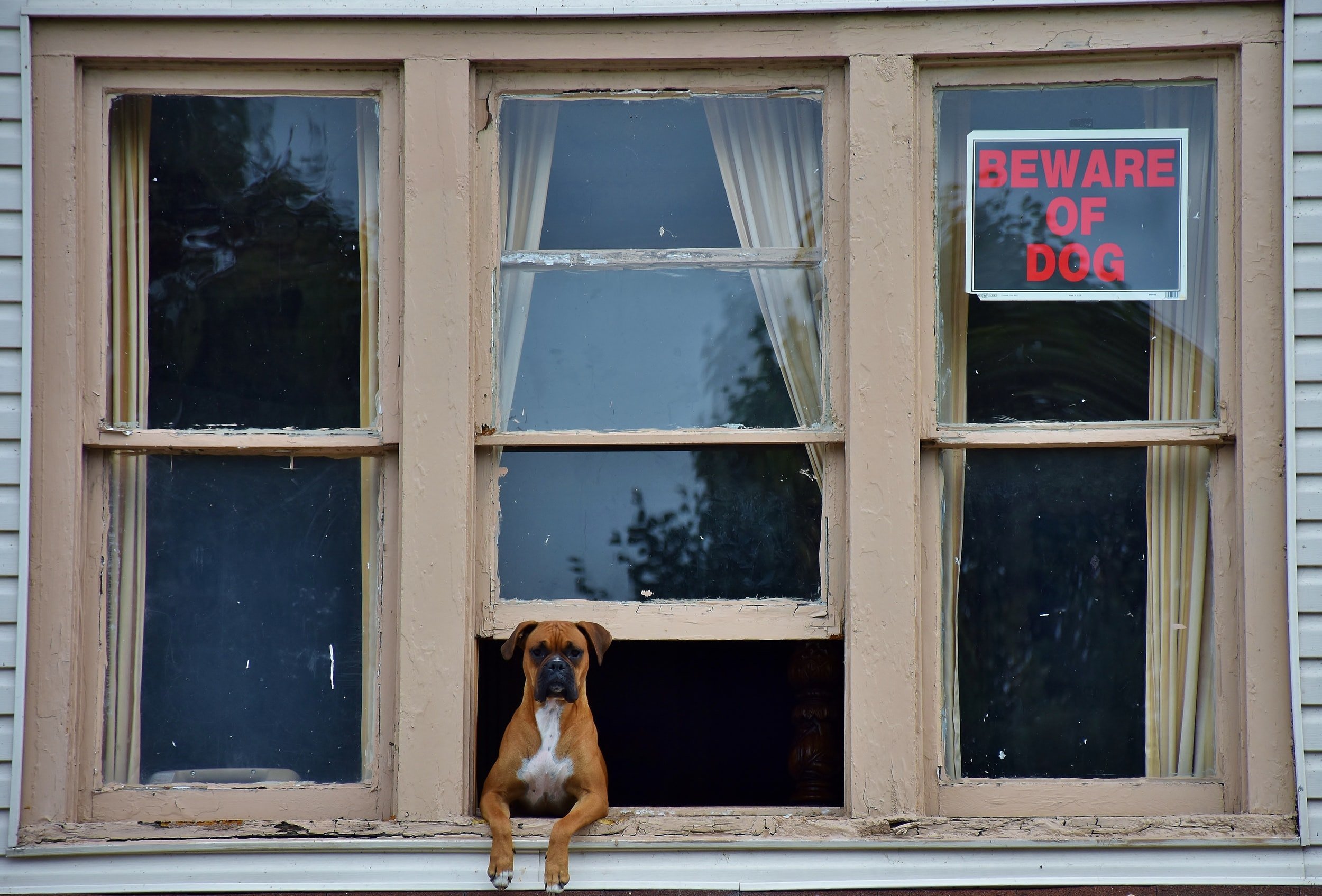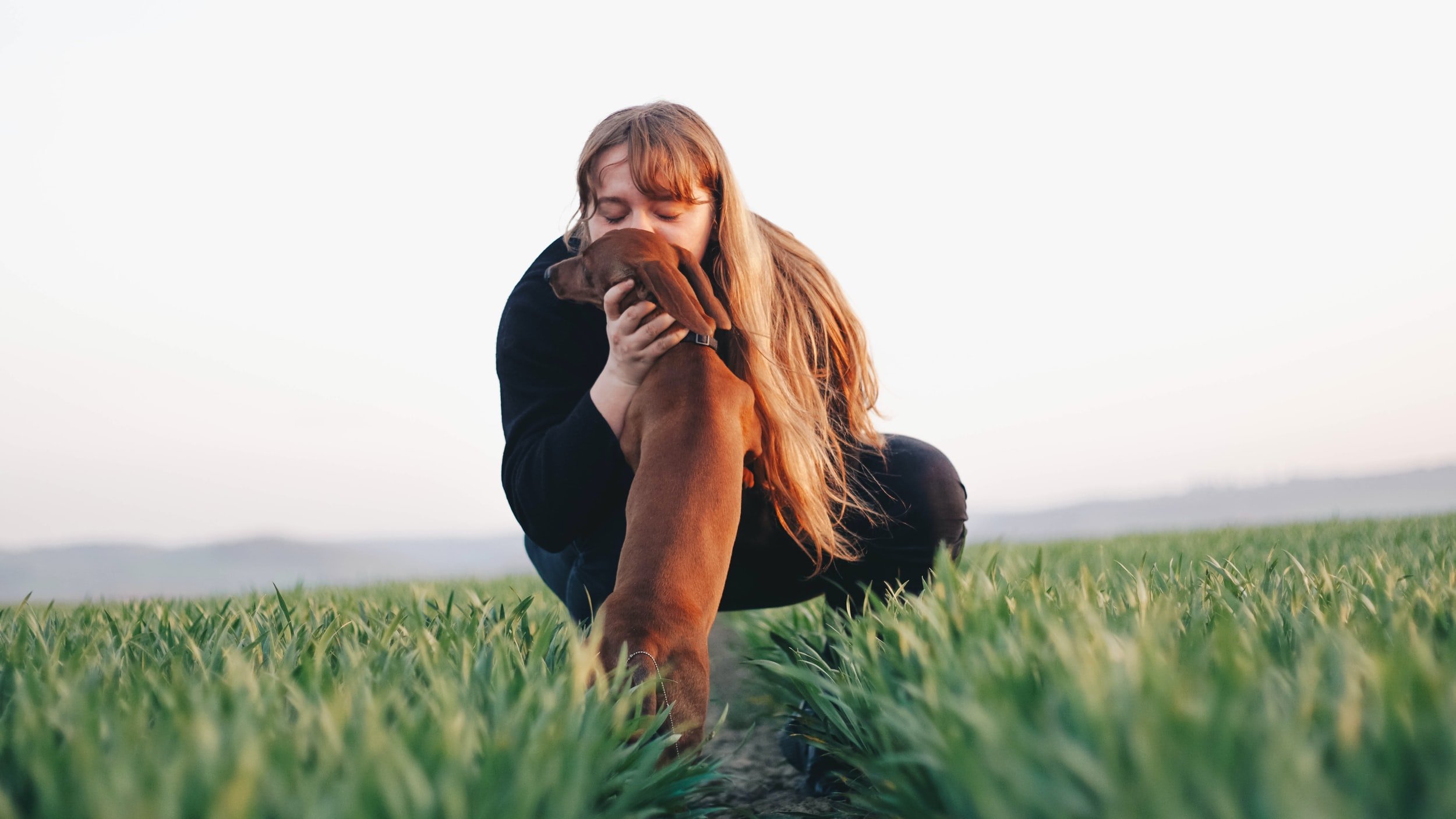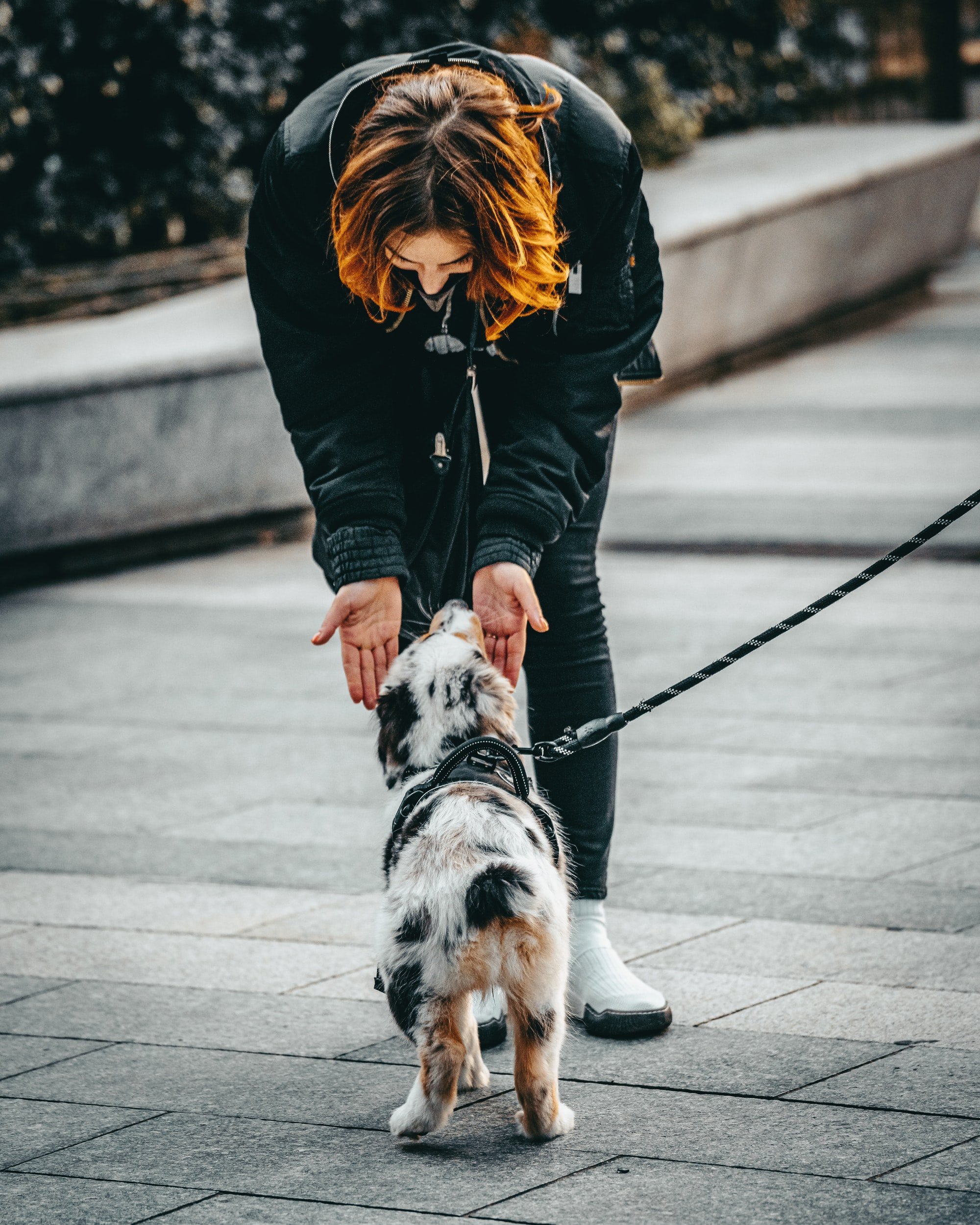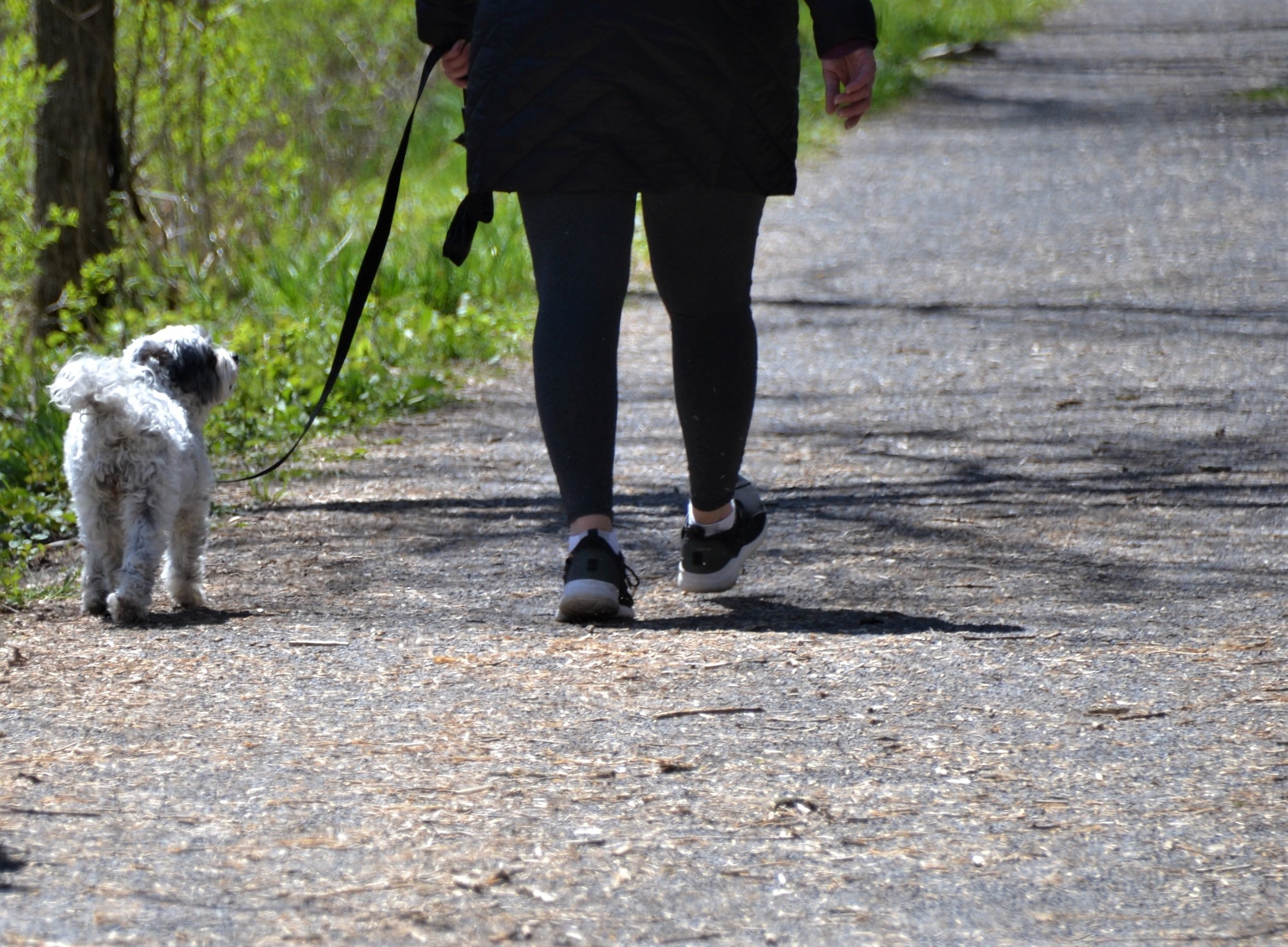Keep practicing! You’ve got this! (Photo: smiling woman squats beside a mixed breed dog)
No matter where you are in your dog training journey, if you’re practicing and putting in effort every day, you’re going to see improvements.
Sometimes dog owners get stuck in “fix it” mode. All they see are the things they want to fix in their dog’s behaviour. It can be all-consuming and it can feel very defeating. Imagine if all you kept tabs on were your least successful walks — the ones where your dog lunged at another dog. You’d feel pretty crappy as those stack up on you one after the other.
If you read the blog post “Let it Go,” from two weeks ago, you know that feeding yourself a steady diet of negative thoughts isn’t doing you or your dog any favours at all. One of my varsity soccer coaches liked to say: “garbage in —> garbage out.” This was true for what we ate as athletes — put in crappy fuel and you won’t have the energy to play well (or think well.) This saying also held true for how we practiced. If you put in a lousy effort all week at practice (poor first touches on the ball, not communicating well to teammates, making wobbly passes, etc) how would you play on game day? Probably pretty lousy. Garbage in —> garbage out also applies to our thoughts. If we feed ourselves a steady diet of negative thoughts, we won’t feel well or produce positive outcomes in any area of our lives.
Dog training is a lot like athletics. You get out of it what you put into it.
There’s a lot of this, before this… (Photo: person dribbling a soccer ball along a street)
(Photo: professional soccer game with fans in the stadium)
And even more practice before this. (Photo: hands holding up the World Cup Trophy)
Dog training and athletics also both require lots of repetitions (practice) to build new skills.
Here’s what we’re going to do:
Positive in —> positive out
Here are a few ways to help you put in positivity so that you’ll see more positive results.
Put in positive thoughts — Read “Let it Go” to learn more: https://beyonddogtraining.ca/news/let-it-go
Set small attainable goals — Day one of heeling isn’t a 5 Km loop for anyone, not even dog trainers. Teach the heel in a distraction free environment and build up slowly. Keep sessions short and positive. End on a positive note.
Put in the time — People live busy lives. Some worry that they won’t be able to find the time to train (especially if they already struggle to find time for the gym or eating lunch every day.) Here are two tips to help you find the time (because if you don’t put in any effort to train your dog, you won’t get the results you want):
Your dog’s mealtimes make great training sessions. Work on things your dog already knows that will save their life. I call this “practice how you play.” This is the time to practice “come,” “leave it,” and “stay.” You can also teach new tricks that are just for fun, like spin or whisper.
Another great time to train is during your walks. You’re going to walk your dog anyway, so dedicate a portion of that walk to training your dog not to pull on the leash. Throw in a few on-leash recalls while you’re at it.
Use your walks and your dog’s mealtimes as mini training sessions (Photo: woman walking her dog on leash beside sunflowers)
Teach — You need to teach your dog what to do instead of barking out the window, digging in the garden, or lunging at bikes/cats/strangers/dogs on your walks. When you become your dog’s teacher, they will look to you instead of making these mistakes. They need leadership and leadership takes practice. When you frame your thoughts in this way and look at yourself as your dog’s teacher, you’ll understand what your dog needs from you in order to give you what you want.
Have fun — Dog training is fun. If you’re not having fun, you may need a new trainer. Dog training is all about spending time with your dog, bonding, learning new things, building confidence, and enjoying yourself.
Ask questions — I always ask my clients to send me videos with questions or to email me questions in between sessions. If you’re struggling with the homework or think you’re doing something wrong, ask for help. It’s what we’re here for.
We want to hear from you in between sessions. Have a question? Please ask us! (Photo: dog sitting down and raising one paw as if he’s asking a question)
Write it down — Write down your goals. Once it’s written down, you can put checkmarks on your successes. It helps remind you that you are seeing progress.
Special Note: If you write down a big goal, like: I want my human and dog reactive dog to be calm on a camping trip around dogs and humans, make a list of all the little things you’ll need to teach your dog in order to succeed at that big goal. Some examples would be:
-teach my dog to be calm in the house (because right now he barks at people and dogs all day long) —> begin teaching the place command in the home
-teach my dog to be calm on walks without distractions of unbalanced dogs around us
-teach my dog a solid recall, so I can call him away from dogs and people
-introduce my dog to my tent (reward calm behaviour)
-socialize my dog around boats, paddle boards, people swimming (socialize means expose them to these things at a distance and reward them for being neutral)
Training a new behaviour with your dog (eg. heeling, placework, stay, come, fetch, etc) is something that takes a few minutes a few times a day. Consistency is the key.
So get out there and keep practicing and keep having fun. Be consistent and you’ll see amazing results very quickly. Dogs learn very, very quickly. Give them the opportunity to dazzle you and they absolutely will.
Have a wonderful weekend, Dog Leaders!
Alyssa
Photos by: Jorge Salvador @jsshotz (smiling woman squats beside a mixed breed dog,) Kobe Amoh
@kobexamoh (person dribbling a soccer ball along a street,) Waldemar Brandt @waldemarbrandt67w (professional soccer game with fans in the stadium,)
Fauzan Saari @fznsr_ (hands holding up the World Cup Trophy,) Delphine Beausoleil @dbeausoleil (woman walking her dog on leash beside sunflowers,) Camylla Battani @camylla93 (dog sitting down and raising one paw as if he’s asking a question,)





















































